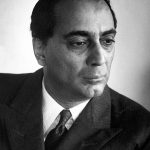Field of Mathematics
- Narayana Pandit: Well known for his works in Mathematics – Ganitakaumudi and Bijaganitavatamsa. Gangadhara, in Gujarat, wrote Lilavati Karamdipika, Suddhantadipika, and Lilavati Vyakhya.
- Nilakantha Somasutvan: Produced Tantrasamgraha, which also contains rules of trigonometrical functions.
- Ganesa Daivajna: Produced Buddhi Vilasini – a commentary on Lilavati – containing several illustrations.
- Krishna of the Valhalla Family: Brought out Navankuraon on the Bijaganit of Bhaskara-ll and elaboration on the rules of indeterminate equations of the first and second orders.
- Nilakantha Jyotirvida: Compiled Tajik, introducing a large number of Persian technical terms.
Field of Biology
- Hamsadeva: Compiled a work in the field of Biology entitled Mriga-Paksi-Shastra in the 13th century. This gives a general account of some animals and birds of hunting.
- Jahangir: In his work – Tuzuk-i-jahangiri– recorded his observations and experiments on breeding and hybridization.
Field of Chemistry
- The Mughals knew the technique of production of gunpowder and its use in gunnery, another application of Chemistry.
- The work Sukraniti attributed to Sukracarya contains a description of how gunpowder can be prepared using saltpeter, sulphur and charcoal in different ratios for use in different types of guns.
- The work Ain-i-akbari speaks of the regulation of the Perfume (attar) in the office of Akbar.
Field of Astronomy
- Mehendra Suri: A court astronomer of Emperor Firoz Shah, developed an astronomical, instrument ‘Yantraja’.
- Paramesvara and Mahabhaskariya: Both in Kerala, were famous families of astronomers and almanac-makers.
- Nilakantha Somasutvan: Produced commentary of Aryabhatiyaa. Kamalakar studied the Islamic astronomical ideas.
- Maharaja Sawai Jai Singh-ll of Jaipur: A patron of Astronomy. He set up the five astronomical observatories (Jantar Mantar) in Delhi, Ujjain, Varanasi, Mathura and Jaipur.
Field of Medicine
- Some important treatises on Ayurveda like the Sarangdhara Samhita and Chikitsasamgraha by Vangasena, the Yagaratbajara, and the Bhavaprakasa of Bhavamisra were compiled.
- The Unani Tibb system of medicine flourished in India during the medieval period.
- Ali-bin Rabban summarized the whole system of Greek medicine as well as the Indian medical knowledge in the book, Firdausu-Hikmat.
- Hakim Diya Muhammad compiled a book, Majinye Diyae, incorporating Arabic, Persian, and Ayurvedic medical knowledge.
- Firoz Shah Tughalaq wrote a book, Tibbe Firozshahi. The Tibbi Aurangzebi, dedicated to Aurangzeb, is based on Ayurvedic sources.

